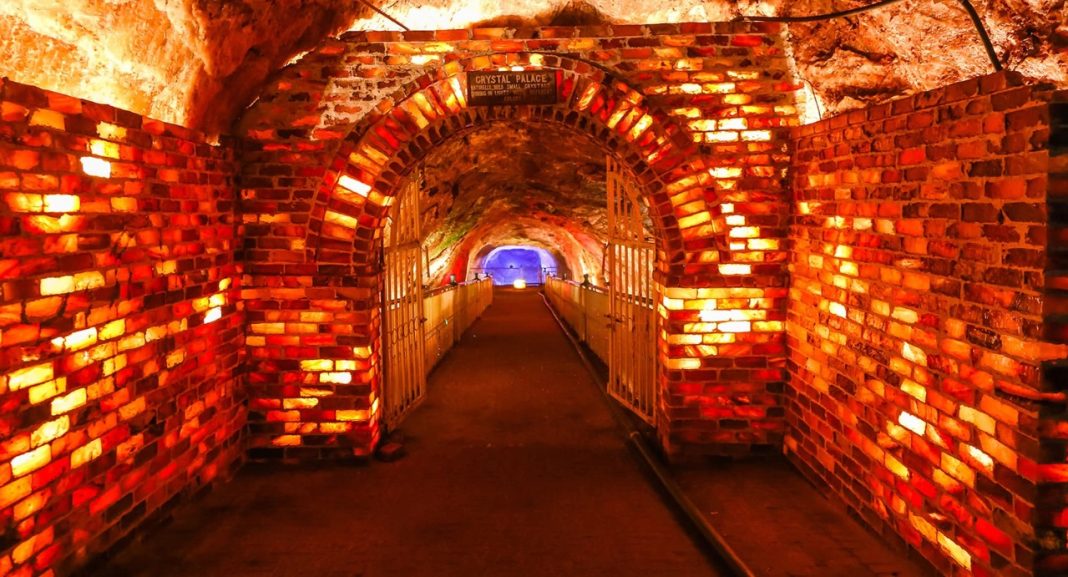ISLAMABAD: Pakistan’s Khewra salt range and the archaeological sites in its surroundings have great potential to be developed into tourist hotspots.
Discussing with WealthPK the steps taken to tap the tourism potential of these areas, Managing Director of Pakistan Tourism Development Corporation (PTDC) Aftabur Rahman Rana said that the mesmerizing salt mines in Khewra attract thousands of local and foreign tourists every year. “To make the tourists’ adventures more stunning and valuable, several measures have been taken, including arranging special lights to illuminate every area of the ‘salt heaven’ in different shades and textures; putting in place seating arrangements for light refreshments; setting up a souvenir shop of articles made out of salt; a reception-cum-briefing hall with distinct walkways to the tunnel mouth and having an electric train ride up to the main mining juncture, etc.”
He maintained that Khewra has a mosque constructed using different coloured salt bricks, which look wonderful when illuminated by the hollow salt bricks. He said saturated brine-filled chambers attached with bridges present a marvellous look with the wonderful reflection of illuminating lights. He added Sheesh Mahal (a glass palace) is another area worth seeing as it is illuminated with light pink transparent salt. He said all these areas are amazing for visitors. “Another big attraction for tourists visiting the salt mine is the availability of both male and female guides who are handy to make the visits more joyous.”
Aftab Rahman also highlighted the other heritage places found in the surroundings of the salt range. He said PTDC is actively promoting all the exquisite places, including the scenic town of Kallar Kahar. “A proper tourist policy is going to be introduced soon to exploit the tourism potential of these areas.”
Discussing with WealthPK the historic importance of salt range, Dr Mahmood ul Hasan, deputy director (museums), department of archaeology and museums, said Khewra is full of natural wonders of pre-Cambrian age. “About 62 legendary heritage sites are found in the area, including Katas Raj temple, the fortified temple complex of Nandna, Rohtas Fort, Malot Fort, Takht-i-Babri, Bagh-i-Safa.” He said conservation of such a great number of sites is not an easy task, but their conservation is important for future generations and history students.
Talking to WealthPK about the socioeconomic potential of salt range in Pakistan, Muhammad Yaqub Shah, principal geologist at Global Mining Company Limited, Islamabad, said the salt range was discovered by the horses of Alexander the Great in 4,000BC. “The horses licked the rocks with so much pleasure that further research led to a long range of salt rocks. One of the largest salt deposits in the world, pre-Cambrian (a geological time scale) or the oldest rocks are exposed here. The salt range geological formations date back to 600 million years ago.”
He said since 1974, PMDC has been operating these mines, and constructed a state-of-the-art hospital to cure anthemic patients. “To get complete treatment here, patients are provided with quality accommodation and healthy food. This hospital must be promoted to attract medical tourists as well.”
He said the salt-based chemical industry must be established in or near the salt mines to cut the cost of many important chemicals like soda ash. “The centuries-old deep brine water must be obtained through drilling to examine the lithium contents. Pakistan can get socioeconomic benefits from both tourism and concentrated water and salt trading (which is already going on but needs more strategy to market).”
Talking to WealthPK about the importance of flora in the salt range, principal scientific officer, plant introduction and seed health lab, the National Agricultural Research Centre (NARC), Dr Riffat Tahira said a systematic study is needed to exploit the true botanical potential in the fascinating areas of the salt range. “This area is naturally gifted with a diverse flora of socio-economic and environmental value. To develop novel drugs, this area can serve as a baseline for conservation and sustainable utilisation through future research on the bioprospecting of potential species. Traditional knowledge of local people to use local flora as remedies for different ailments also serves as potential knowledge about them.”





